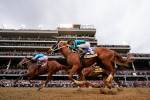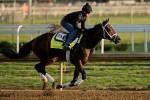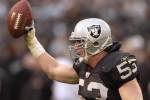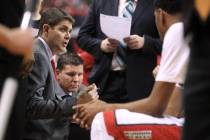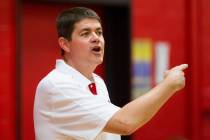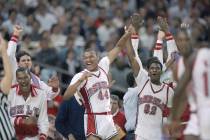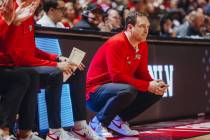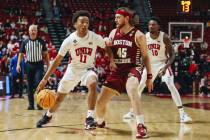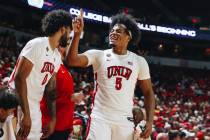Tarkanian gave media plenty to cover — good and bad
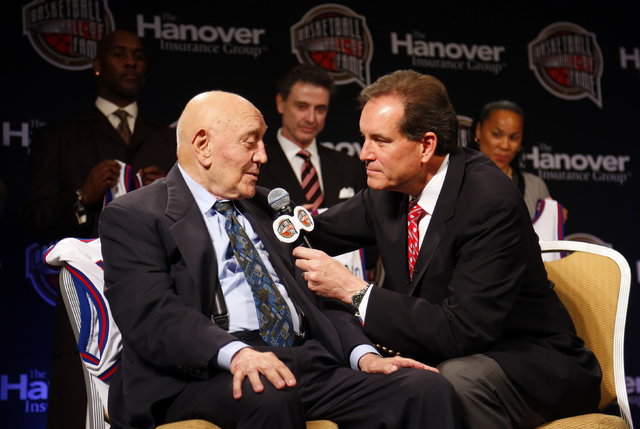
A media target throughout the country, Jerry Tarkanian didn’t always have it easy in Las Vegas, either, when it came to local coverage of his basketball team.
John Henderson, who covered Tarkanian and his championship and controversial UNLV program for the Las Vegas Review-Journal, wrote several hard-hitting stories examining everything from low graduation rates to the types of cars players drove.
Such coverage didn’t sit well with many fans, and Henderson once arrived home to see his apartment trashed. Henderson mentioned the incident to Tarkanian, who warned the scribe to be careful.
“He said it as genuine concern,” said Henderson, who later went to The Denver Post and is now retired. “He didn’t say it as a warning. He said, ‘John, people here want to win more than I do.’ People get crazy. I took it seriously. Good Lord, people need to get a grip on life. I spent time in the SEC and saw its win-at-all-costs attitude, but that was nothing like UNLV basketball at that time.”
That’s not to say Tarkanian, who died Wednesday morning at Valley Hospital Medical Center at age 84, didn’t get upset at what Henderson or others wrote or said.
Henderson and Tarkanian once got into a major spat at Chicago Midway Airport, yelling at each other for 15 minutes as startled passengers walked by.
“He’d blow up at me and be fine with me right then,” Henderson said. “It’s remarkable how he could turn it on and off.”
There obviously was a lot to report on during Tarkanian’s tenure, when UNLV went from a quality regional program to a national power, and did it with a flair that attracted many fans and critics — as well as the eyes of the NCAA.
“He was a great guy to cover for a 25-year-old getting into the business,” Henderson said. “It was a good time. It was a really good time.”
The Rebels experienced the highs of four Final Four appearances, including the 1990 national championship, and the lows of constant NCAA hounding, the national projection of UNLV as an outlaw program and the ultimate ouster of Tarkanian in 1992.
Henderson said Tarkanian didn’t emphasize the importance of education with his players until later in his tenure, but noted the NCAA had an agenda to oust Tark, and then-UNLV president Robert Maxson possessed a similar intention.
But Henderson also was critical of his own former newspaper, saying the Review-Journal also “did a horrible investigation” of how players’ cars were paid and whether any NCAA rules were violated. He said the story “came across as very racist.”
“Larry Johnson wouldn’t talk to me after games,” Henderson said.
Tarkanian, though, was open and provided access to allow Henderson to see up close how the coach got so much out of his players. Henderson also saw heavily favored UNLV lose 79-77 in the 1991 national semifinals to a Duke team it beat by 30 points for the 1990 national title.
“(Tarkanian) didn’t have that team prepared,” Henderson said. “I had lunch with him the day before the semifinal with Duke. I could tell he wasn’t focused. The players were overconfident.”
Former Review-Journal reporter Royce Feour covered Tarkanian at the beginning of his career at UNLV and they became good friends.
“Jerry Tarkanian was one of a kind. And in so many ways,” Feour said. “As a basketball coach and as a person. I feel blessed to have been very close with Tarkanian. I met him when I was covering the Rebels and he was still at Long Beach State. After a UNLV game at Long Beach, I ran into Tark at the team hotel when he was looking for Rebel coach Rolland Todd. He couldn’t find Todd, so Jerry took me to a Long Beach booster party and we were friends from then on.
“I wrote the first column in Las Vegas on Jerry, a long piece extolling his praises with an intent to support Tark for the next Rebel coach as it appeared John Bayer would not be retained for the following year. I closely covered the recruitment process of Tarkanian by the UNLV boosters. Tark was really torn between staying at Long Beach and coming to Las Vegas and would change his mind from morning to afternoon to night. He was concerned about not pulling Danny off his Little League team.
“I went with Jerry to all of Danny’s football and basketball games at Bishop Gorman, junior varsity through varsity, and we would go out socializing after. At the places we stopped, Jerry was unfailingly friendly with the fans and took the time to listen to them tell him, “You should play this guy, or that guy more” or whatever advice they gave him. Tark related very well to the average fan, and not just the Gucci Row big-time hotel owner.”
Feour said Tarkanian’s popularity in Las Vegas crossed economic and political lines.
“One part that always struck me was that he brought the city of Las Vegas together — Democrat and Republican, the wealthy and the less-than-average,” Feour said. “He made basketball fans out of people who weren’t basketball fans before. He was the most popular person in Las Vegas, and he even considered running for mayor at one time.”
Tarkanian routinely spoke his mind, which made him a lightning rod, but it also provided plenty of fodder for the local and national media.
He first attracted national attention by calling out the NCAA while guest-writing columns for the Long Beach (Calif.) Press-Telegram when Tarkanian served as Long Beach State’s coach in the late 1960s and early 1970s.
His criticisms of the NCAA didn’t let up when Tarkanian arrived at UNLV in 1973, but Yahoo Sports columnist Dan Wetzel said it wasn’t just the shots at the NCAA. Tarkanian’s willingness to recruit African-American players from disadvantaged backgrounds, Wetzel said, set the coach apart.
He compared Tarkanian to Don Haskins, who led what then was called Texas Western to the 1966 national championship, the first coach to do so using an all-black starting lineup.
“Jerry Tarkanian was no less of a racial pioneer than Don Haskins,” Wetzel said. “I don’t know if anybody had less prejudice than Jerry Tarkanian. He didn’t care what you looked like. When he was at Long Beach and then UNLV, he didn’t just take the best African-American players. He took those who were rough around the edges because he believed in second chances.
“At that point, (most coaches) would take black kids from middle-class families, and there were a lot of kids they didn’t take. That was unfortunate, and that’s why the players cared for (Tarkanian).”
Wetzel wrote a book with Tarkanian, “Runnin’ Rebel: Shark Tales of Extra Benefits, Frank Sinatra, and Winning It All,” in which the legendary coach let loose with a series of opinions. Most were directed at the NCAA.
Tarkanian treated writing the 2005 book as a full-time job. He would pick up Wetzel at 7 a.m., go to a coffee shop, drive around the valley and end up at an Italian restaurant for dinner.
And Tarkanian talked the entire time, giving Wetzel story after story in interview sessions that routinely lasted 10 or 12 hours.
“What strikes me is how he was extremely motivated to do the book,” Wetzel said. “One of the things about Jerry that was always clear was that he always was a hard worker and a blue-collar guy.”
Contact reporter Mark Anderson at manderson@reviewjournal.com or 702-387-2914. Follow him on Twitter: @markanderson65.
RELATED:
Tarkanian changed the game forever
Delayed but not denied, Tarkanian finally opens door to Basketball Hall
Players, officials, family honor Tarkanian at induction ceremony
Tarkanian: Hall of Fame election ‘validates everything I’ve done’
Tarkanian overwhelmed by overdue election to Basketball Hall of Fame
Bronze statue honors ‘Tark the Shark’ on UNLV campus
Signs of Tarkanian’s innovations all over college game
Tarkanian recalls three matchups against Wooden, UCLA
‘Shark Attack’ author Yaeger holds Tark close to his heart




